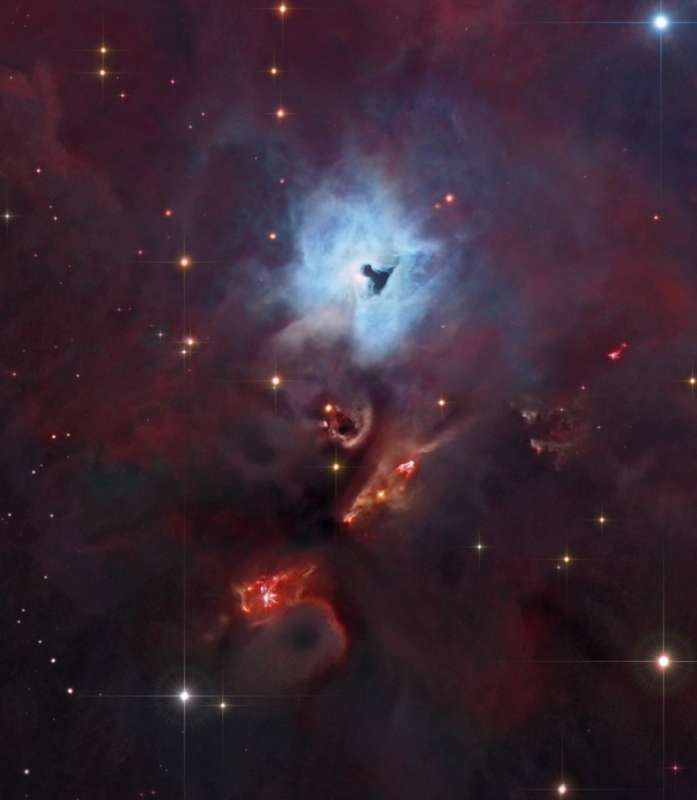Credit & Copyright:
Image Data: Subaru Telescope (NAOJ), Hubble Space Telescope,
Additional Color Data and Processing: Robert Gendler
Explanation:
South of the large star-forming region known as the
Orion Nebula, lies bright blue reflection nebula
NGC 1999.
At the edge of the
Orion molecular
cloud complex some 1,500 light-years distant, NGC 1999's
illumination is provided by the
embedded variable star V380 Orionis.
That nebula is marked with a dark sideways T-shape near center in
this
cosmic vista that spans about 10 light-years.
The dark shape was once assumed to be an obscuring dust cloud
seen in silhouette against the bright reflection nebula.
But recent
infrared images
indicate the shape is likely a hole blown through the nebula
itself by energetic young stars.
In fact,
this
region abounds with energetic young stars
producing jets and outflows with luminous shock waves.
Cataloged as Herbig-Haro (HH) objects, named for astronomers
George Herbig and Guillermo Haro,
the shocks look like red gashes in
this scene that includes HH1 and HH2 just below NGC 1999.
The stellar jets
push through the surrounding
material at speeds of hundreds of kilometers per second.
Image Data: Subaru Telescope (NAOJ), Hubble Space Telescope,
Additional Color Data and Processing: Robert Gendler
Comet ISON:
Observing Campaign
| SOHO
| SDO
| STEREO
| Hangout
Authors & editors:
Robert Nemiroff
(MTU) &
Jerry Bonnell
(USRA)
NASA Web Site Statements, Warnings,
and Disclaimers
NASA Official: Jay Norris.
Specific
rights apply.
A service of:
LHEA at
NASA /
GSFC
& Michigan Tech. U.
Based on Astronomy Picture
Of the Day
